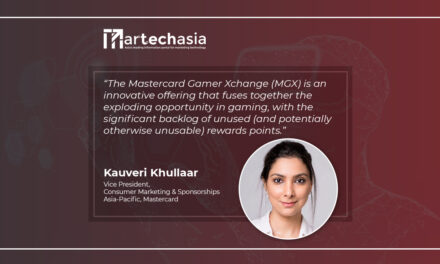Consumers have become more cost-conscious amid the increasing prices of all goods and services. What advice do you have for brand owners/business leaders to address consumers’ concerns and buying behaviour?
Mario: The core issue in business isn’t cost but rather the value delivered by a brand. Ultimately this will increasingly be one of your most critical questions in the business: does your brand provide value, and is it superior to that of your competitors?
The rise in inflation has merely brought to light those businesses that were following unsustainable growth paths with their escalating gross margins – reaching 50%, or even 70% gross margin in everyday household products. This raises the question, what is the threshold?
Consumers are increasingly resistant to constant price hikes, often veiled under the guise of ‘premiumisation’, a strategy that seems to have no end. This backlash was inevitable, especially considering the significant population in Asia belonging to middle- and low-income groups.
The key challenge lies in evaluating the value proposition: Does your product or brand justify its cost? What exactly are consumers receiving in exchange for their money?
Consider a simple formula: Value is equal to Benefit divided by Price.
While reducing prices may seem to increase value, this tactic, often employed in discount or promotional strategies, ultimately diminishes the true value. A more challenging but effective approach is to enhance the benefits without altering the price: what additional value, tangible or intangible, does the consumer get for the price they pay? Identifying and understanding these benefits is critical for any brand.
Is it getting harder to justify marketing investments? What can marketers do to support their case?
Mario: As market growth plateaus and product categories become more uniform – such as the minimal differences between the latest and previous models of the Apple or Samsung phones – the importance of brand differentiation increases. We’re heading towards a scenario where each category and industry faces its unique dynamics and challenges, but a common thread remains the same: the need for brands to put in more effort, often requiring increased investments to solve its problems while embracing new opportunities in the category.
Conversely, pricing will exert opposite pressures. With consumers becoming more judicious and resistant to high prices exacerbated by inflation, marketing budgets will face constraints as they are often a ratio of sales revenue.
How can businesses optimise the returns on their marketing investments?
Technology, AI in particular, can crucially address this challenge. This is because AI offers promising avenues for enhancing marketing efficiency and effectiveness, aligning with the evolving demands of a more price-conscious, well-informed consumer base.
What is ‘Intelligent Naivety’ and how is it key to unlocking new opportunities when combined with Category Expertise?
Mario: Deep expertise in your category can paradoxically constrain the exploration of new ideas and possibilities. Extensive knowledge often leads to the acceptance of existing norms as hard to question.
This is where the concept of ‘Intelligent Naivety’ comes in. It challenges ingrained beliefs and assumptions, fostering the discovery of fresh opportunities from the perspective of customers and consumers.
In such an environment, the capacity for lateral thinking within a team is essential. ‘Intelligent Naivety’ is key in this context, as it energises teams to recognise and capitalise on new opportunities and further break free from conventional thought patterns – be they internal or external.
What is ‘Next-gen Creative Crowdsourcing’? Where does Creative Crowdsourcing stand in the marketer’s toolbox and how can it help create disruptive solutions for brands?
Mario: Traditional Crowdsourcing, often hailed as a panacea for various problems, presents several issues. It’s a misconception to view it as a one-size-fits-all solution. While it can sometimes yield the right answers, it’s imprudent to rely solely on this method for problem-solving. A common format in Traditional Crowdsourcing is a contest model where many compete but only a few, if any, are compensated. This often leads to high turnover, as contributors feel their efforts are not sufficiently valued.
In contrast, Next-gen Creative Crowdsourcing represents a more advanced and equitable approach. It emphasises fairness and respect, placing the voluntary and participatory nature of contests at the forefront.
This new crowdsourcing approach is more inclusive and flexible due to its ability to cater to specific needs like geographic location (e.g., consumer needs in Southeast Asia differ from Latin America) or individual interests and habits (e.g., pet owners, coffee lovers).
Communication is another essential element in Next-gen Creative Crowdsourcing, given that the number of creative participants being managed is much smaller.
Unfortunately, the potential of this approach is often overlooked by marketers due to preconceived notions about Traditional Crowdsourcing, resulting in a missed opportunity for a valuable tool that could greatly help to address many brand challenges.
Next-gen Creative Crowdsourcing is an excellent resource for tackling a range of brand obstacles, from new product development to brand propositions, communications, productivity, claims, and packaging. It encourages creative and disruptive solutions that are not confined by the internal limitations or cultural norms of an organisation.
In problem-solving, possessing extensive knowledge in a field can hinder lateral thinking. This is where Next-gen Creative Crowdsourcing can be extremely advantageous and provides fresh perspectives unbounded by traditional constraints.
Why do you believe that even industry Goliaths need to think and act like industry Davids to remain competitive?
Mario: After my tenure at Nokia, here’s what I’ve learned. Like other once-dominant players, Nokia fell into complacency, slow to recognise the shifts in the industry since their peak.
Yet, the lesson is broader. In today’s market, with consumers brimming with brand options, any company, regardless of its size, is perpetually on the brink of becoming obsolete. This is not only unique to Nokia; Kodak, for instance, is another example of a former leader who faded into the backdrop.
Being a large player in the market no longer guarantees consumer loyalty. Consumers now have more options, are better informed, and have limited time. Therefore, unless a brand adopts the mindset and agility of a ‘hungry’ challenger — a ‘David’ in the metaphorical sense — and constantly strives to maintain its leadership in its category, its relevance is at risk.
Current market dominance does not ensure a permanent position. Every brand is merely one innovation or consumer trend away from becoming irrelevant unless it maintains a vigilant focus on survival and growth amidst rapid tech, industry and consumer changes.



















